What is an RNAV Approach?
What is an RNAV approach? This type of approach uses GNSS systems to provide navigation to the pilot. Each RNAV approach will have a few different landing minima associated with it. Your ability to fly to these minima depends on the type of GNSS navigation unit installed in your plane.
Pre-Read Quiz
Do you know these 5 GNSS related acronyms? Test your knowledge for the article contained below.
RNAV Restricted Approaches
There are a variety of approaches you will not be permitted to fly as a Canadian rated instrument pilot unless you have the required experience, training, and equipment in your airplane. For example CAT II or CAT III ILS approaches, “RNAV (RNP)” approaches, and “RCAP RNAV” approaches. When you pull up the approach plates for these approaches you will know you are not authorized to fly them because they will look much different than the traditional ILS and RNAV approach plates in which you are familiar! They also might say, “Authorization Required”. Here are some examples from CYVR Vancouver and CYXX Abbotsford. For more info on RNAV RNP approaches see the Transport Canada AIM section 6.3.9 and 6.3.10.
2D and 3D RNAV Approaches
There two types of approaches according to the ICAO, those that offer only lateral navigation performance (2 dimensional) and those that offer both lateral and vertical navigation performance (3 dimensional). 2D GNSS are non-precision approaches (NPA). For example, LNAV and LP. 3D GNSS approaches are APV approaches. For example, LPV and LNAV/VNAV.
What RNAV Landing Minima to Use
In order to know what landing minima to use for your GNSS approach you need to know the capabilities of the GNSS equipment installed in your plane. In order to make use of APVs in North America you will need a navigation unit that supports WAAS (or Baro-VNAV). If you do not know what unit is installed in your airplane the approach minima should be displayed on your GPS unit as you intercept the approach course. An explanation table from Transport Canada gives a further explanation of RNP for specific approach minima.
Example RNAV Performance
LPV and LNAV
Here is the RNAV (GNSS) Z RWY 07 at CYXX Abbotsford, BC. As you can see there are 4 sets of minima; LPV, LNAV/VNAV, LNAV, and CIRCLING. Depending on the navigation performance you achieve the landing minima change. For example if you are getting LPV performance you can fly the approach down to the DA of 417 ft ASL before you must initiate a missed approach if you do not have the required visual reference. If you are getting LNAV performance you can only fly the approach down to the MDA of 760 ft ASL before you must initiate a missed approach. (See the landing minima visual reference requirements below from the CAP GEN.)
LNAV/VNAV
This type of approach minima is an older type of GNSS approach that offers vertical guidance. It is not angular in nature like an LPV approach. That is, the lateral navigation path does not get narrower as you get closer to the runway threshold; the CDI does not become more sensitive as you get closer. Because of this, these type of approaches often have higher minima. You can read a little more about it in this Boldmethod article.
CIRCLING
If you look at the available approaches for CYXX Abbotsford you notice that there are no approaches to RWY 25 other than an RNP (which you are not authorized to use). If you plan to approach using the RNAV (GNSS) Z RWY 07, but land on RWY 25, your minima increases to 940 ft ASL. You will only continue the approach (by circling to the other end of the runway) if you have the required visual reference before the CIRCLING landing minima has been met. Even with LPV navigation performance displaying on your GPS you cannot take the approach down past 940 ft ASL if you intend to circle to the other end of the runway, RWY 25 (unless, of course, you have the required visual reference).
LNAV+V
If you are receiving LNAV+V performance on your GNSS receiver you must only fly to the LNAV minima. In this case you are not getting “Approved” vertical guidance; you are only getting “Advisory” vertical guidance. For example, CYPK Pitt Meadows has an RNAV (GNSS) Y RWY 08R approach that only has LNAV and CIRCLING minima. On the final approach course note that the GPS is telling us we have LNAV+V performance.
Conclusion to What is an RNAV Approach
Hopefully this gives you some insight into which RNAV approaches you can choose to fly as well as some clarity with regard to LPV, LNAV/VNAV, LNAV navigation performance landing minima. Learning all about GNSS approaches is confusing and definitely challenging. In your next IFR lesson we hope you have a better understanding of navigation performance as it relates to landing minima. Login and leave your comments below.
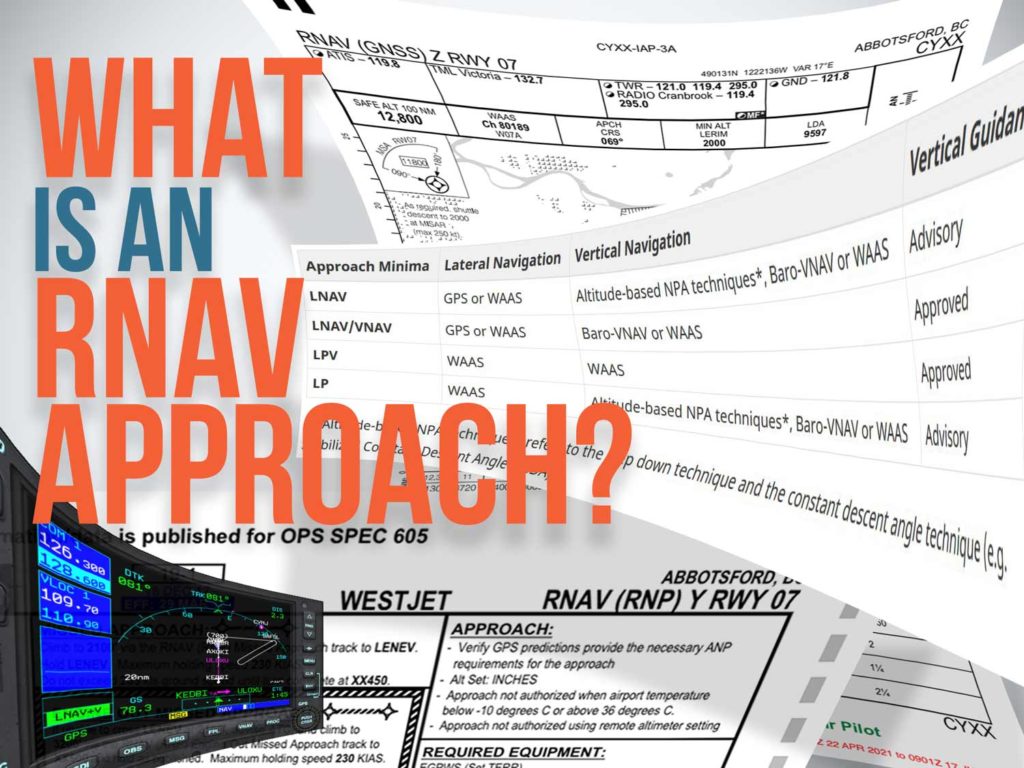
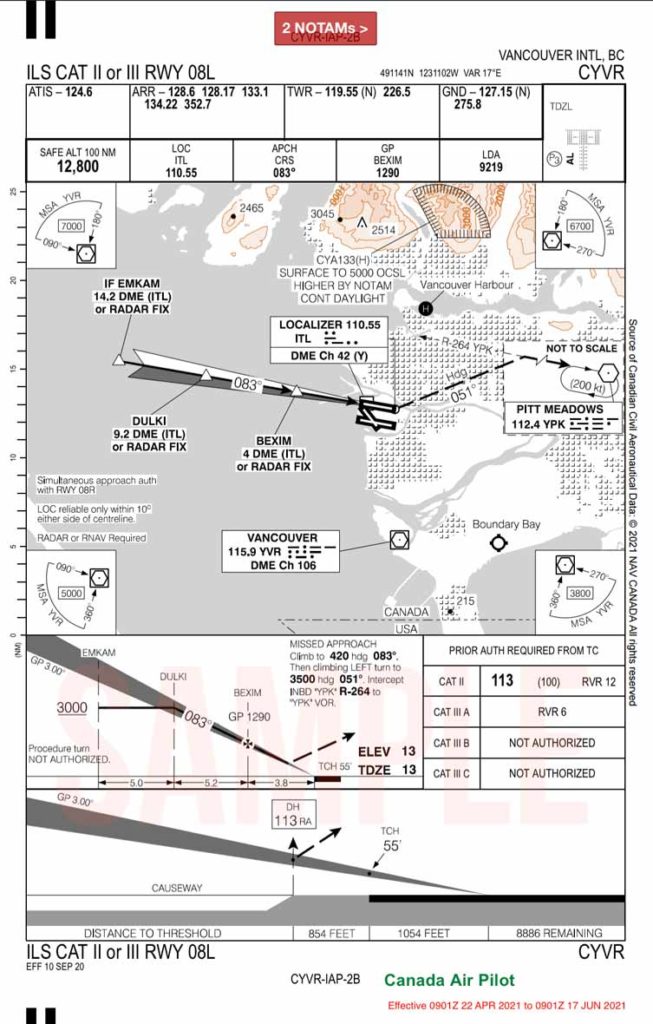
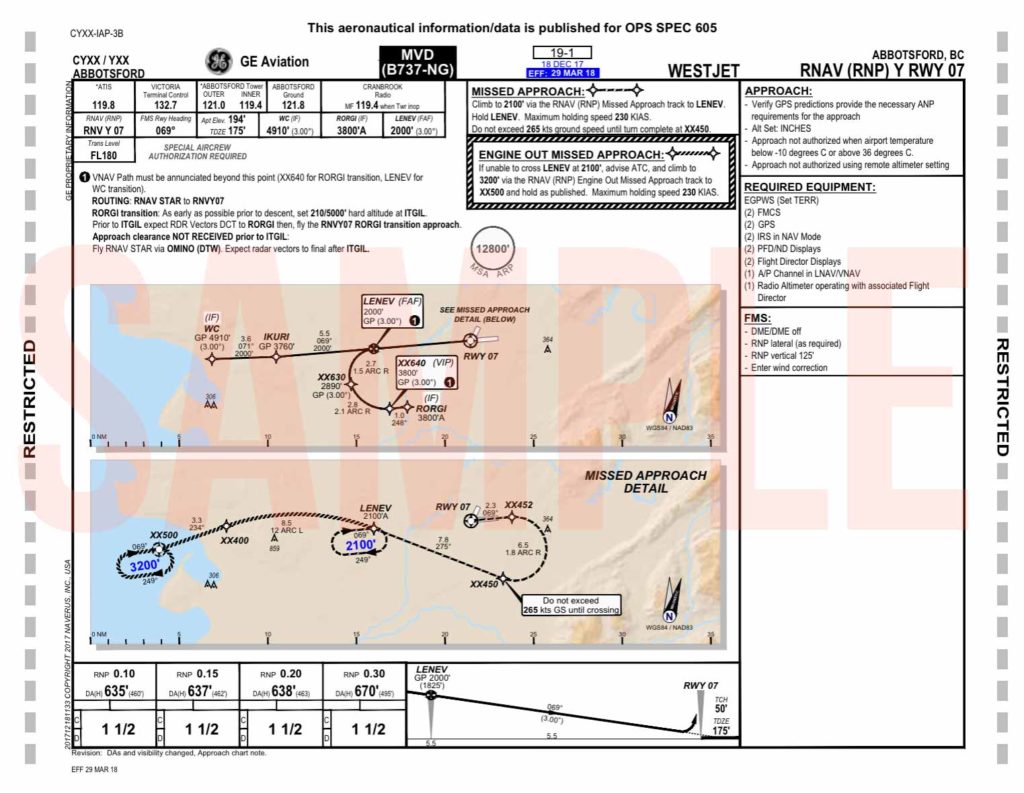
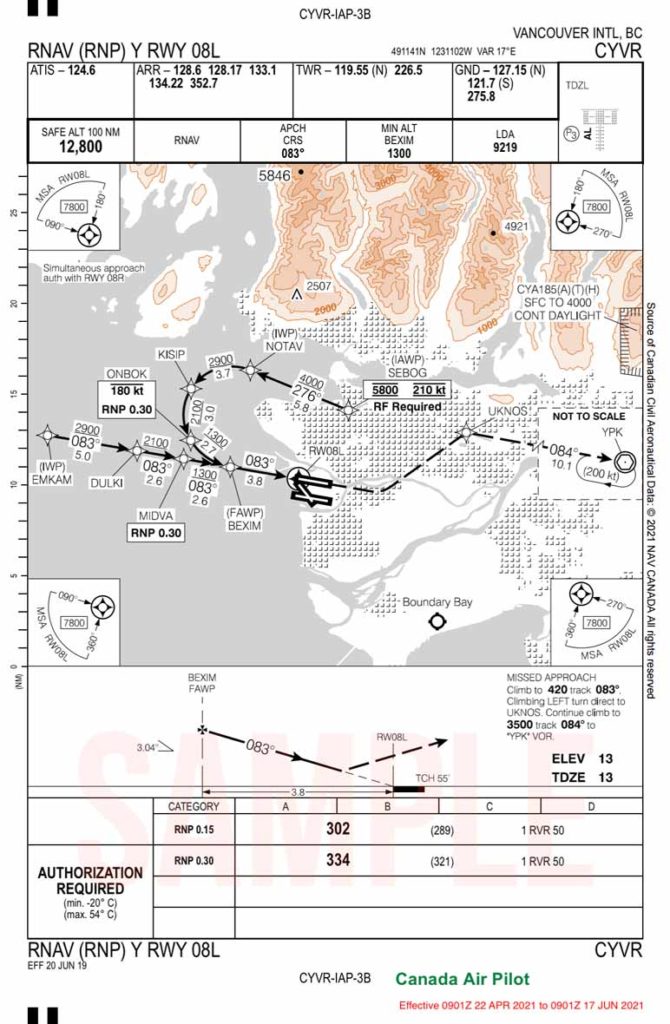

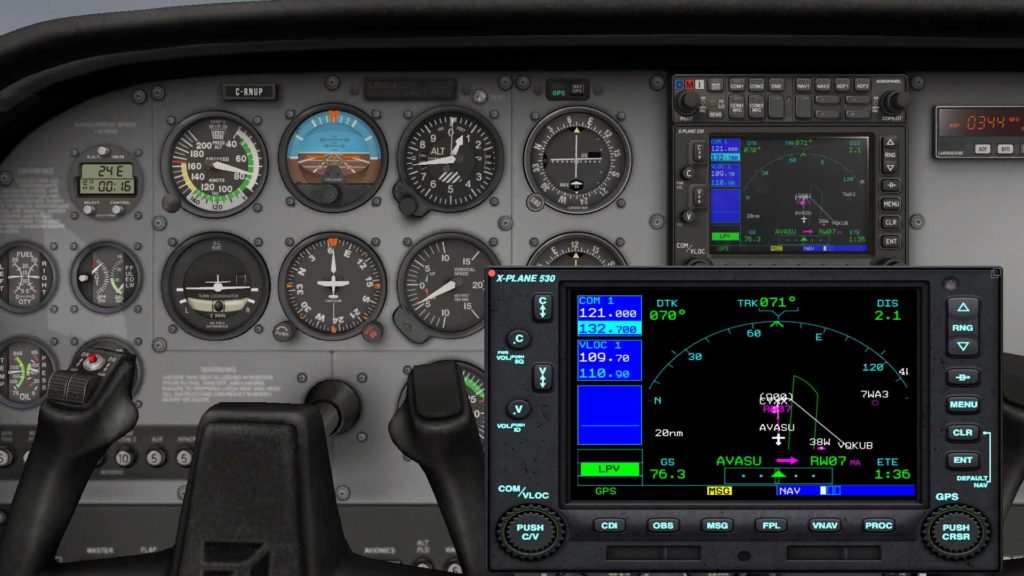
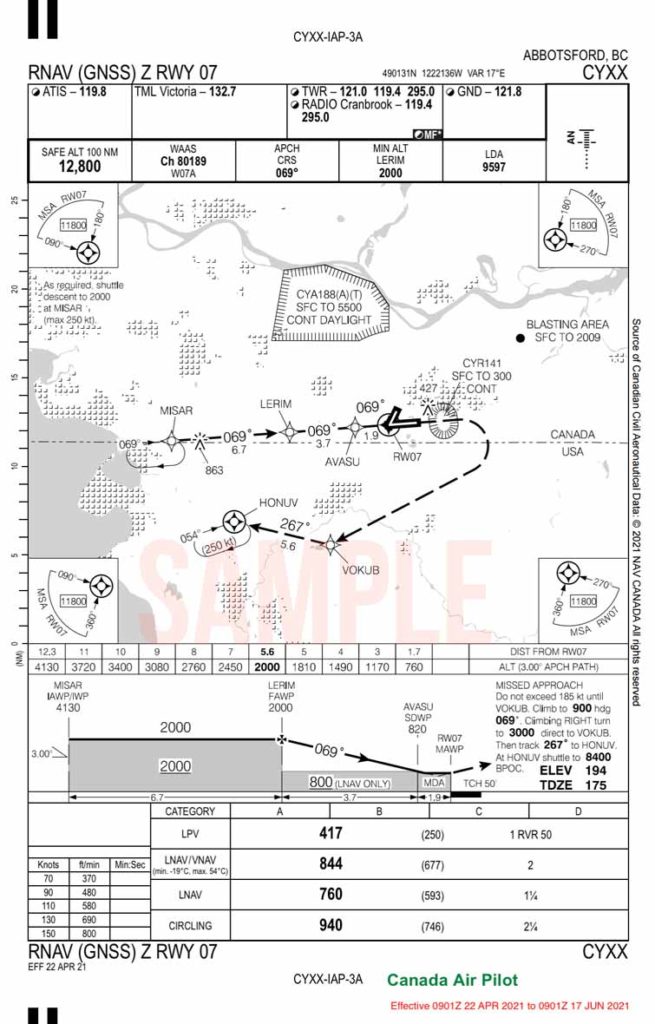
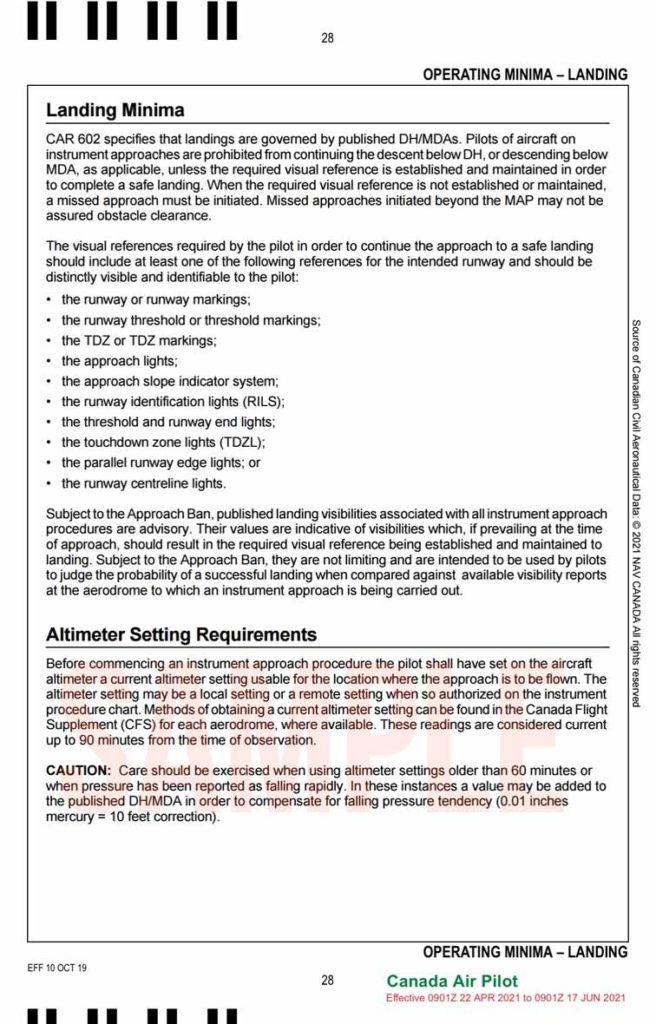
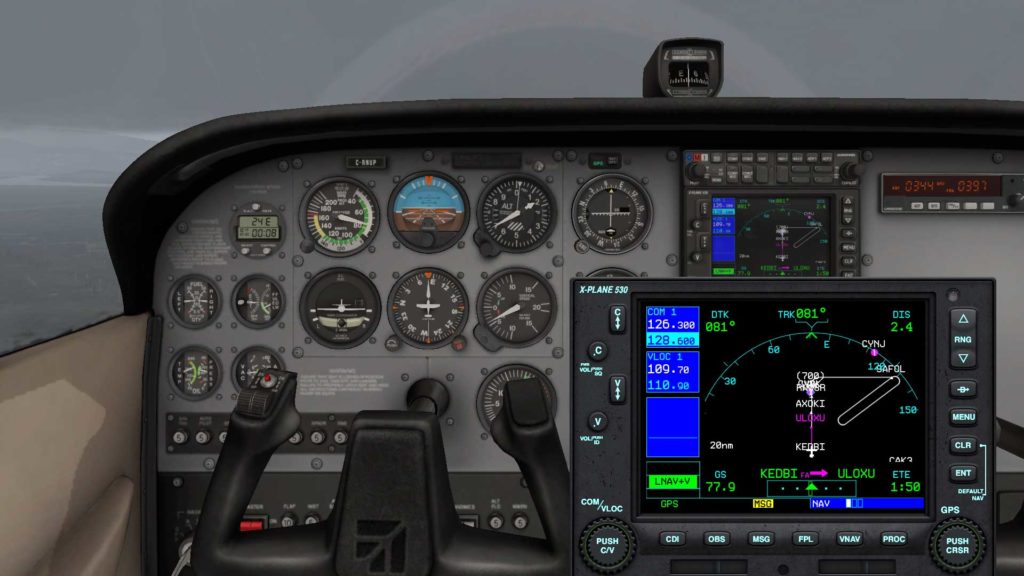
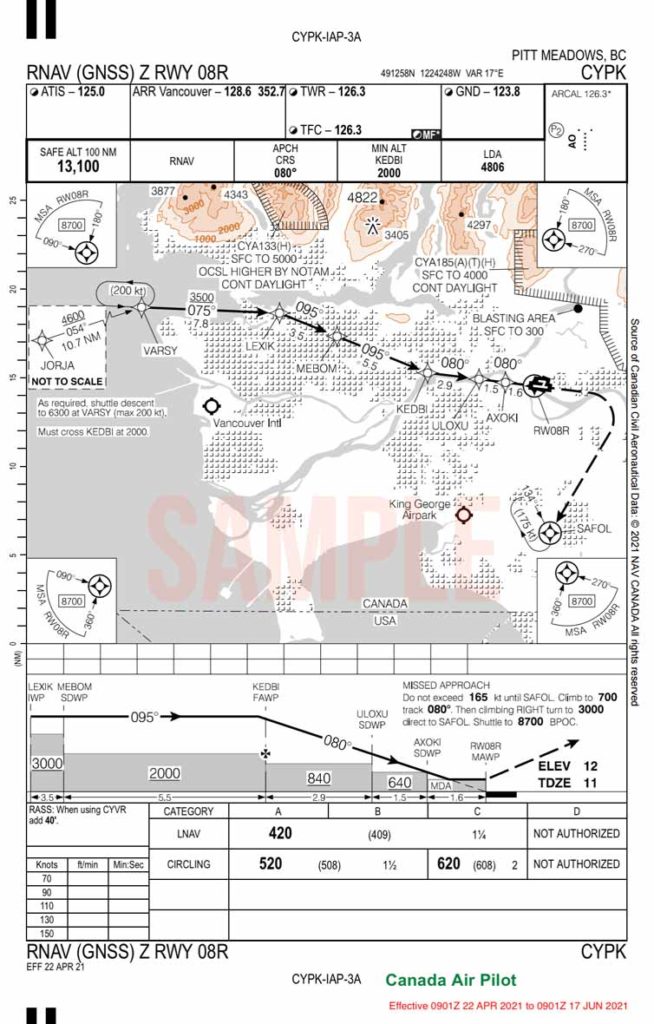
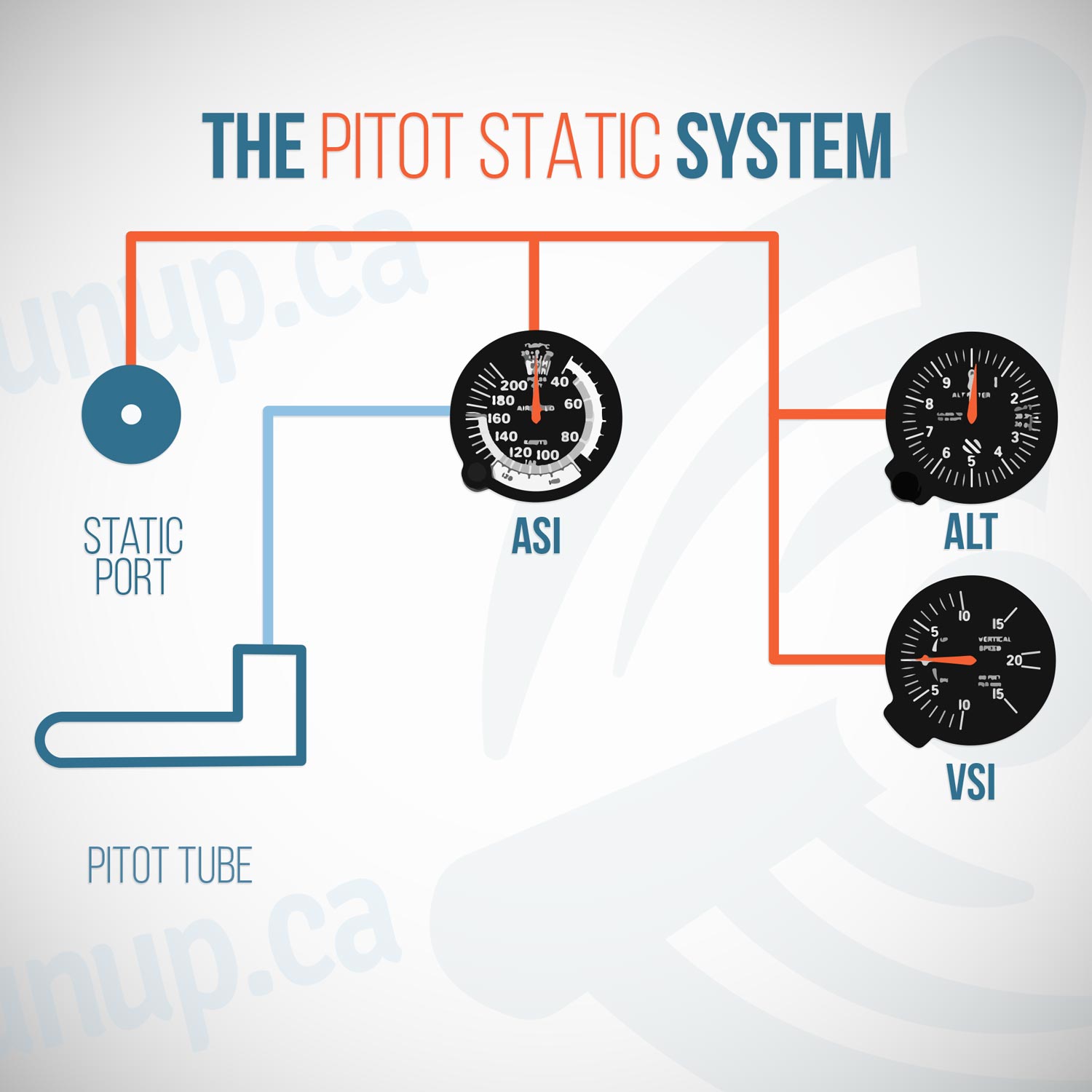
[…] Source: https://www.runup.ca/what-is-an-rnav-approach/ […]